Assistant Professor Pisitpol Chirapongsananurak, Ph.D.
ผศ. ดร.พิสิษฐ์พล จิรพงศานานุรักษ์
Education
- Ph.D. (Electrical and Computer Engineering) The University of Texas at Austin, USA, 2016
- M.Eng. (Electrical Engineering) Chulalongkorn University, Thailand, 2011
- B.Eng. (Electrical Engineering) Chulalongkorn University, Thailand, 2009
Email: pisitpol.c@chula.ac.th
Research Interest
- Power System Dynamics and Control
- Power System Modeling and Simulation
- Smart Grid and Renewable Energy
Research Cluster
1.
Chirapongsananurak, P; Santoso, S
Multi-time-scale simulation tool for renewable energy integration analysis in distribution circuits Journal Article
In: Inventions, vol. 2, no. 2, 2017, ISSN: 24115134, (cited By 5).
@article{Chirapongsananurak2017a,
title = {Multi-time-scale simulation tool for renewable energy integration analysis in distribution circuits},
author = {P Chirapongsananurak and S Santoso},
url = {https://www.scopus.com/inward/record.uri?eid=2-s2.0-85067933909&doi=10.3390%2finventions2020007&partnerID=40&md5=5b2364a68e0548584f52fe4627279bcd},
doi = {10.3390/inventions2020007},
issn = {24115134},
year = {2017},
date = {2017-01-01},
journal = {Inventions},
volume = {2},
number = {2},
publisher = {MDPI Multidisciplinary Digital Publishing Institute},
abstract = {This paper develops a distribution circuit multi-time-scale simulation tool for applications in wind turbine and photovoltaic (PV) integration analysis. The proposed simulation tool developed in MATLAB™ includes several distribution circuit components, such as voltage sources, distribution lines, transformers, loads, capacitor banks, wind turbines and PVs. Each equipment consists of three models for simulations in three different time scales, i.e., steady-state, electromechanical transient and electromagnetic transient models. Therefore, the proposed tool is able to perform a long-term simulation involving power system phenomena spreading across time scales. The test circuits employed to perform multi-time-scale simulation in this paper are modified from the IEEE four-node test feeder. The simulation scenarios include wind speed and solar irradiance ramp up and down; a capacitor bank is energized and de-energized; and a single-line-to-ground fault occurs and clears itself. The simulation results show that the proposed tool is capable of evaluating power system phenomena spread across time scales. © 2017 by the authors. Licensee MDPI, Basel, Switzerland.},
note = {cited By 5},
keywords = {},
pubstate = {published},
tppubtype = {article}
}
This paper develops a distribution circuit multi-time-scale simulation tool for applications in wind turbine and photovoltaic (PV) integration analysis. The proposed simulation tool developed in MATLAB™ includes several distribution circuit components, such as voltage sources, distribution lines, transformers, loads, capacitor banks, wind turbines and PVs. Each equipment consists of three models for simulations in three different time scales, i.e., steady-state, electromechanical transient and electromagnetic transient models. Therefore, the proposed tool is able to perform a long-term simulation involving power system phenomena spreading across time scales. The test circuits employed to perform multi-time-scale simulation in this paper are modified from the IEEE four-node test feeder. The simulation scenarios include wind speed and solar irradiance ramp up and down; a capacitor bank is energized and de-energized; and a single-line-to-ground fault occurs and clears itself. The simulation results show that the proposed tool is capable of evaluating power system phenomena spread across time scales. © 2017 by the authors. Licensee MDPI, Basel, Switzerland.
2.
Dubey, A; Chirapongsananurak, P; Santoso, S
A framework for stacked-benefit analysis of distribution-level energy storage deployment Journal Article
In: Inventions, vol. 2, no. 2, 2017, ISSN: 24115134, (cited By 2).
@article{Dubey2017,
title = {A framework for stacked-benefit analysis of distribution-level energy storage deployment},
author = {A Dubey and P Chirapongsananurak and S Santoso},
url = {https://www.scopus.com/inward/record.uri?eid=2-s2.0-85066010054&doi=10.3390%2finventions2020006&partnerID=40&md5=d71a5bc9976cbe898f43159432a8424d},
doi = {10.3390/inventions2020006},
issn = {24115134},
year = {2017},
date = {2017-01-01},
journal = {Inventions},
volume = {2},
number = {2},
publisher = {MDPI Multidisciplinary Digital Publishing Institute},
abstract = {This paper presents a planning framework for integrating energy storage (ES) systems into the distribution system. An ES system is deployed to simultaneously provide multiple benefits, also known as stacked-benefits, for the feeder. The primary and secondary application scenarios for the feeder are identified. The proposed ES deployment approach includes the following steps: (1) size the ES system for primary application; (2) identify optimal ES locations based on both primary and secondary application scenarios; (3) calculate the ES accommodation capacity for each potential location; and (4) develop control methods for ES units and conduct grid impact analysis to demonstrate ES applications. For the selected feeder, the primary application for ES deployment is to provide the N-1 contingency requirement. During normal operating conditions, ES is programmed for multiple secondary applications: voltage management and ancillary services by frequency regulation. A probabilistic approach is presented to obtain the optimal ES size for providing the N-1 contingency requirement. Optimal ES locations are obtained based on secondary application scenarios. Real and reactive power control methods are developed to demonstrate the viability of deploying an ES system for simultaneously providing multiple applications. The simulation results show that ES can successfully provide the stacked-benefits for the distribution circuit. The proposed framework is generic and can be employed for the ES integration analysis of any feeder, with different sets of primary and secondary applications. © 2017 by the authors. Licensee MDPI, Basel, Switzerland.},
note = {cited By 2},
keywords = {},
pubstate = {published},
tppubtype = {article}
}
This paper presents a planning framework for integrating energy storage (ES) systems into the distribution system. An ES system is deployed to simultaneously provide multiple benefits, also known as stacked-benefits, for the feeder. The primary and secondary application scenarios for the feeder are identified. The proposed ES deployment approach includes the following steps: (1) size the ES system for primary application; (2) identify optimal ES locations based on both primary and secondary application scenarios; (3) calculate the ES accommodation capacity for each potential location; and (4) develop control methods for ES units and conduct grid impact analysis to demonstrate ES applications. For the selected feeder, the primary application for ES deployment is to provide the N-1 contingency requirement. During normal operating conditions, ES is programmed for multiple secondary applications: voltage management and ancillary services by frequency regulation. A probabilistic approach is presented to obtain the optimal ES size for providing the N-1 contingency requirement. Optimal ES locations are obtained based on secondary application scenarios. Real and reactive power control methods are developed to demonstrate the viability of deploying an ES system for simultaneously providing multiple applications. The simulation results show that ES can successfully provide the stacked-benefits for the distribution circuit. The proposed framework is generic and can be employed for the ES integration analysis of any feeder, with different sets of primary and secondary applications. © 2017 by the authors. Licensee MDPI, Basel, Switzerland.

